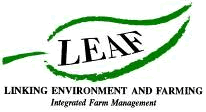
Marking up lambs
with Paul Barnes
We farm a 196 acre sheep and suckler cow farm in Lancashire and have been welcoming people onto our farm for several years now. We have built up a good relationship with a large residential care organisation whose service users really enjoy visiting the farm and having a go at real farming tasks. We find it breaks down barriers, improves communication and creates a real team spirit. My wife Sue and I have found that we can make a real difference to peoples’ understanding and enjoyment of farming and the countryside by opening up opportunities to visit our farm.
Marking up lambs makes a great ‘Let Nature Feed Your Senses’ visit. It’s really hands-on and makes our visitors feel useful and engaged in a ‘real’ and meaningful farming activity. It involves some important skills like team working, co-operation and communication and gives them a real feeling of pride in what they have achieved.
One of the nice things about this activity is all you really need is the equipment that you already use for marking up: pens, weighing scales, paint and, of course, some lambs.
Once I have welcomed the group and made sure that everyone is comfortable, I explain the overall aim of the task: to identify, weigh and mark lambs that are to be taken for slaughter. I try not to talk too much at this time – it’s best to get people active and involved as soon as possible.
We split the group into three: ‘selectors’, ‘weighers’ and ‘markers’. I explain to each group the job they have to do, covering what to look for in a lamb, what weight you are aiming for, how and where to mark and so on. Once the lambs have been rounded up, I help the ‘selector’ group to identify those lambs which look about the right weight and encourage everyone in the group to get involved. Once a lamb has been chosen, I show the ‘weigher’ group how to carefully weigh the lamb and make a note of its weight. If it’s the right weight, then the lamb is marked by the ‘marker’ group.
Usually we spend an hour or so marking up the lambs with our visitors but you can make it shorter or longer depending on what the group wants to do. If the weather’s good and everyone is happy outside we then spend some time talking about what we do on our farm. I ask the group to tell me why they think we keep sheep and get them to think about the different meat and wool products they use day-to-day. There’s always a way to connect with people, whether it’s the Sunday roast or knitting.
If it’s getting cold or wet we carry on inside. We have a fleece that people can touch and feel and some wool and knitted clothes, as well as a rams horn and a sheep’s skull. Its a bit gruesome but some of the visitors are really interested. There can sometimes be some challenging questions about slaughtering but I’ve found that being straightforward and honest is the best way.
We also try to explore how sheep look after the land and how keeping sheep shapes the countryside they see around them. We can look at the grass that the sheep eat as well the flowers and insects and animals that live in the fields with them.

